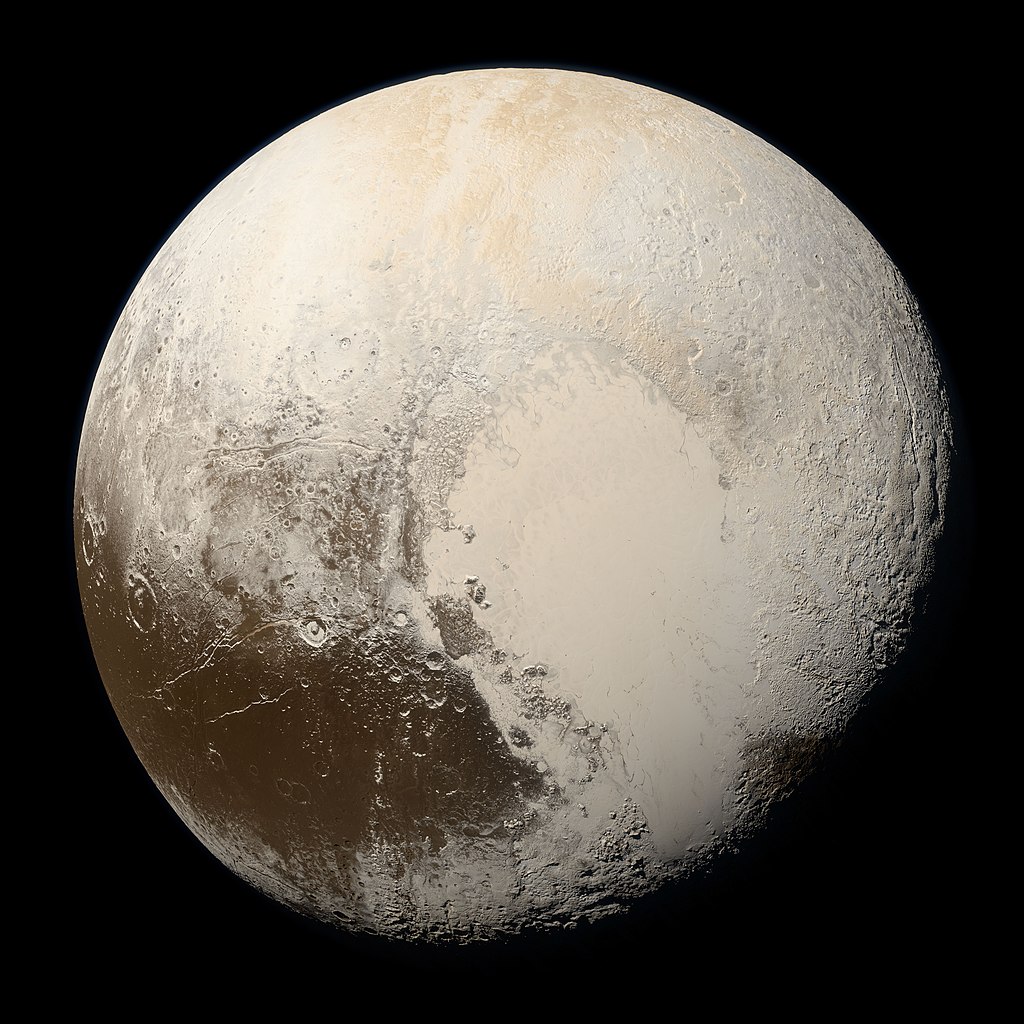What makes a Planet a Planet?
A planet must do three things:
- It must orbit a star,
- It must be big enough to have enough gravity to force a spherical shape
- It must be big enough that its gravity cleared away any objects of a similar size near its orbit.
What is a Dwarf Planet?
A dwarf planet is a celestial body that orbits the sun, has enough mass to assume an approximately round shape, has not cleared the neighborhood surrounding its orbit, and is not a moon, according to the International Astronomical Union, which establishes criteria for planetary research.
According to Astronomy 101 by Carolyn Collins Petersen
"In the current definition (which will probably get revised again), a planet is defined by the International Astronomical Union (IAU) as a celestial body that has its primary orbit around the Sun, has sufficient mass for its own gravity to mold it into a round shape, and has cleared the neighborhood around its orbit by sweeping up all the planetesimals, which means that it’s the only body of its size in its orbit."
Hindi nasatisfy ni Pluto yung last condition which is yung "has cleared the neighborhood around its orbit by sweeping up all the planetesimals, which means that it’s the only body of its size in its orbit" Kasi may mga kasama siya sa orbit nya na kasinglaki niya or mas malaki pa sa kanya.
Other Dwarf Planets in Solar System:
- Pluto
- Ceres
- Makemake
- Haumea
- Eris
Pluto
Planet Type: Dwarf Planet
Namesake: ROMAN GOD OF THE UNDERWORLD
Moons: 5
Distance from the Sun: 39AU
Day: 153 hoursYear: 248 Earth years
Radius: 715 miles | 1,151 kilometers
Introduction:
- Pluto, discovered in 1930, was once thought to be our solar system's ninth planet.
- Discovered by Clyde Tombaugh
- Pluto's diameter is only about 1,400 kilometers.
- Pluto is roughly about half the width of the United States at that size.
- It orbits the Sun at a distance of approximately 3.6 billion miles and has a thin atmosphere made largely of nitrogen, methane, and carbon monoxide.
- Pluto has five known moons orbiting it, the largest of which is Charon.
Namesake:
- Pluto is the only planet named by an 11-year-old girl (so far).
- Venetia Burney of Oxford, England, suggested that the new discovery be named after the Roman god of the underworld to her grandpa in 1930.
- The moons of Pluto are named after different mythological beings connected to the underworld.
- Because the roots of Pluto's name are a little unclear in mythology, we asked Dr. Elizabeth Vandiver, chair of the Department of Classics at Whitman College in Walla Walla, Washington, to explain: "Pluto is the Roman god of the Underworld, similar to Hades in Greek mythology.
- However, the Roman spelling of Pluto is clear."
Potential for Life
- Not habitable, (extremely cold)
Size and Distance
- Pluto is 5.5x smaller than Earth
- Radius: 715 miles | 1,151 kilometers
- Pluto is about 1/6 the width of Earth. If Earth was the size of a nickel, Pluto would be about as big as a popcorn kernel.
Orbit and Rotation
- Pluto also exhibits a retrograde rotation; spinning from east to west like Venus and Uranus.
Moons
- Pluto has five known moons: Charon, Nix, Hydra, Kerberos, and Styx.
- Charon, the biggest of Pluto's moons, is about half the size of Pluto itself, making it the largest satellite relative to the planet it orbits in our solar system.
- Pluto and Charon are often referred to as a double planet.
Structure
- Mountains, valleys, plains, and craters can be found on Pluto's surface.
- Pluto's temperature ranges from -375 to -400 degrees Fahrenheit (-226 to -240 degrees Celsius).
- Long troughs and valleys, some as long as 370 miles (600 kilometers), add to this dwarf planet's intriguing features.
- There are no craters on Pluto's most conspicuous plains, which appear to be comprised of frozen nitrogen gas.
Atmosphere
- Pluto has a thin, fragile atmosphere that expands as it approaches the Sun and contracts as it goes away, much like a comet.
- Pluto's surface ices sublimate (change directly from solid to gas) and rise to form a thin atmosphere when it gets close to the Sun.
- Pluto's low gravity (approximately 6% that of Earth) causes its atmosphere to be significantly higher in altitude than that of our planet.
- During the part of the year when Pluto is moving far away from the Sun, it becomes significantly colder. The majority of the planet's atmosphere may freeze and fall to the surface as snow during this time.
References:
H. (n.d.). What Is a Dwarf Planet?. What is a Dwarf Planet?. https://www.jpl.nasa.gov/infographics/what-is-a-dwarf-planet.
Petersen , C. C. (2013). Astronomy 101: From the Sun and Moon to Wormholes and Warp Drive, Key Theories, Discoveries, and Facts about the Universe. Adams Media
What Is a Planet? | NASA Space Place – NASA Science for Kids. (2019, June 27). What Is a Planet? | NASA Space Place – NASA Science for Kids. https://spaceplace.nasa.gov/planet-what-is/en/.
.




Comments
Post a Comment